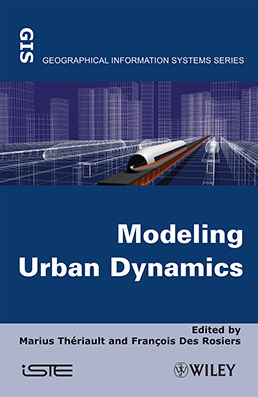
The surge, over the past few decades, in the application of computer-based information technologies has brought about the development of spatial analysis, GIS, and tools simulation that allow for the design of integrated, disaggregate-level models of urban dynamics.
The field of Urban Dynamics itself is based on the systems engineering concept that all complex systems (and cities and urban areas are no exception) are comprised of independent and often smaller, more understandable sub-components with relationships to one another. This allows for the system as a whole to be modeled, using knowledge of the individual subsystems and their behaviors. In this instance, urban dynamics allows for the modeling and understanding of land use, the attractiveness of space to residents, and how the ageing and obsolescence of buildings affects planning and economic development, as well as population movements, with the urban landscape.
The book adopts a trans-disciplinary approach that looks at the way residential mobility, commuting patterns, and travel behavior affect the urban form. It addresses a series of issues dealing with the accessibility of urban amenities, quality of life, and assessment of landscape residential choices, as well as measurement of external factors in the urban environment and their impact on property values.
1. The Role of Mobility in the Building of Metropolitan Polycentrism, Sandrine Berroir, Hélène Mathian, Thérèse Saint-Julien and Lena Sanders.
2. Commuting and Gender: Two Cities, One Reality?,Marie-Hélène Vandersmissen, Isabelle Thomas and Ann Verhetsel.
3. Spatiotemporal Modeling of Destination Choices for Consumption Purposes: Market Areas Delineation and Market Share Estimation, Gjin Biba and Paul Villeneuve.
4. Generation of Potential Fields and Route Simulation Based on the Household Travel Survey, Arnaud Banos and Thomas Thévenin.
5. Impacts of Road Networks on Urban Mobility, Jean-Christophe Foltête, Cyrille Genre-Grandpierre and Didier Josselin.
6. Daily Mobility and Urban Form: Constancy in Visited and Represented Places as Indicators of Environmental Values, Thierry Ramadier, Chryssanthi Petropoulou, Hélène Haniotou, Anne-Christine Bronner and Christophe Enaux.
7. Household Residential Choices upon Acquiring a Single-Family House, Yan Kestens, Marius Thériault and François Des Rosiers.
8. Distances, Accessibility and Spatial Diffusion, Pierre Dumolard.
9. Accessibility to Proximity Services in Poor Areas of the Island of Montreal, Philippe Apparicio and Anne-Marie Séguin.
10. Accessibility of Urban Services: Modeling Socio-spatial Differences and their Impacts on Residential Values, Marius Thériault, Marion Voisin and François Des Rosiers.
11. Hedonic Price Modeling: Measuring Urban Externalities in Québec, François Des Rosiers, Jean Dubé and Marius Thériault.
12. The Value of Peri-urban Landscapes in a French Real Estate Market, Thierry Brossard, Jean Cavailhès, Mohamed Hilal, Daniel Joly, François-Pierre Tourneux and Pierre Wavresky.
13. Conclusion, Marius Thériault and François Des Rosiers.
Marius Thériault teaches the application of geographical information sciences to regional and urban planning at Laval University, where he is a full professor. His research interests encompass urban dynamics, transportation and accessibility modeling, environmental studies, geosimulation and spatio-temporal analysis.
François Des Rosiers is an economist and urban planner. He currently teaches Urban and Real Estate Management at the Faculty of Business Administration, Laval University, where he is a full professor. His research interests focus mainly on urban and real estate dynamics and on hedonic price modeling.